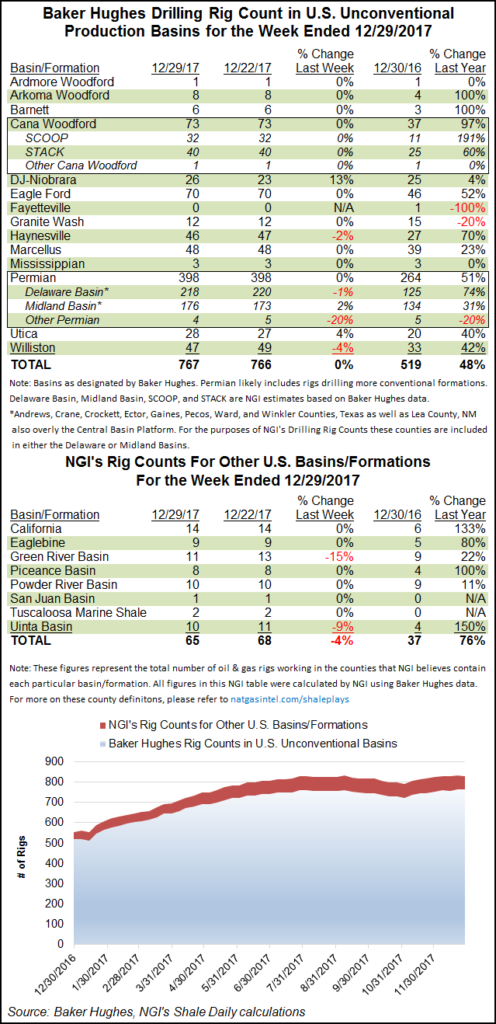Shale Daily | E&P | NGI All News Access
DJ-Niobrara, Permian Still in Producers’ Focus Based on Rig Count
The last North American rig count of 2017 went out with a whimper instead of a bang as the number of rigs actively drilling for oil and gas for the week ending Dec. 29 declined by two units to 929, according to Baker Hughes data.

Both rigs that disappeared from the previous week were searching for natural gas, which took that count from 184 to 182. Despite the week-over-week decline, the 182 figure still marks a 38% increase from the 132 active gas rigs one year ago.
Active rigs drilling for oil stood pat at 747 from week to week, which represents a 42% increase from the 525 rigs in action for the week ended Dec. 30, 2016.
On the shale front, Colorado’s Niobrara/Denver-Julesburg (DJ) Basin remains hot. Following the 2014 global oil price crash, the plays seem to be on everyone’s dance card again, being wooed by Wall Street, industry and government representatives looking at potential oil and natural gas growth areas.
For the week ending Dec. 29, the DJ-Niobrara added three rigs to 26, which equates to a 13% increase from the previous week. The three-rig gain also puts the current number of active rigs in the play at one over the 25 rigs that were operational one year ago.
The Permian, which has been another hot play targeted by producers, saw some rearranging of rigs within the play even as the overall Permian stood unchanged at 398 rigs in operation. Permian sub-basin, the Delaware Basin, dropped two rigs to 218, while the Midland Basin added three to 176 rigs. The segment known as Other Permian dropped one rig to four.
The mature super basin that extends from West Texas into southeastern New Mexico should reach an oil production record in 2017 of 815 million bbl-plus, far exceeding the previous peak of 790 million bbl set in 1973, according to IHS Markit in a recent report.
Elsewhere, the Utica Shale added one rig to 28, a 40% increase over the 20 rigs in operation one year ago.
In the loser’s column on the week, the Williston Basin dropped two rigs to 47, while the Haynesville Shale slid one to 46 rigs. Despite those two small declines, both plays have activity levels that remain higher by 42% and 70%, respectively, than one year ago.
© 2024 Natural Gas Intelligence. All rights reserved.
ISSN © 2577-9877 | ISSN © 2158-8023 |
